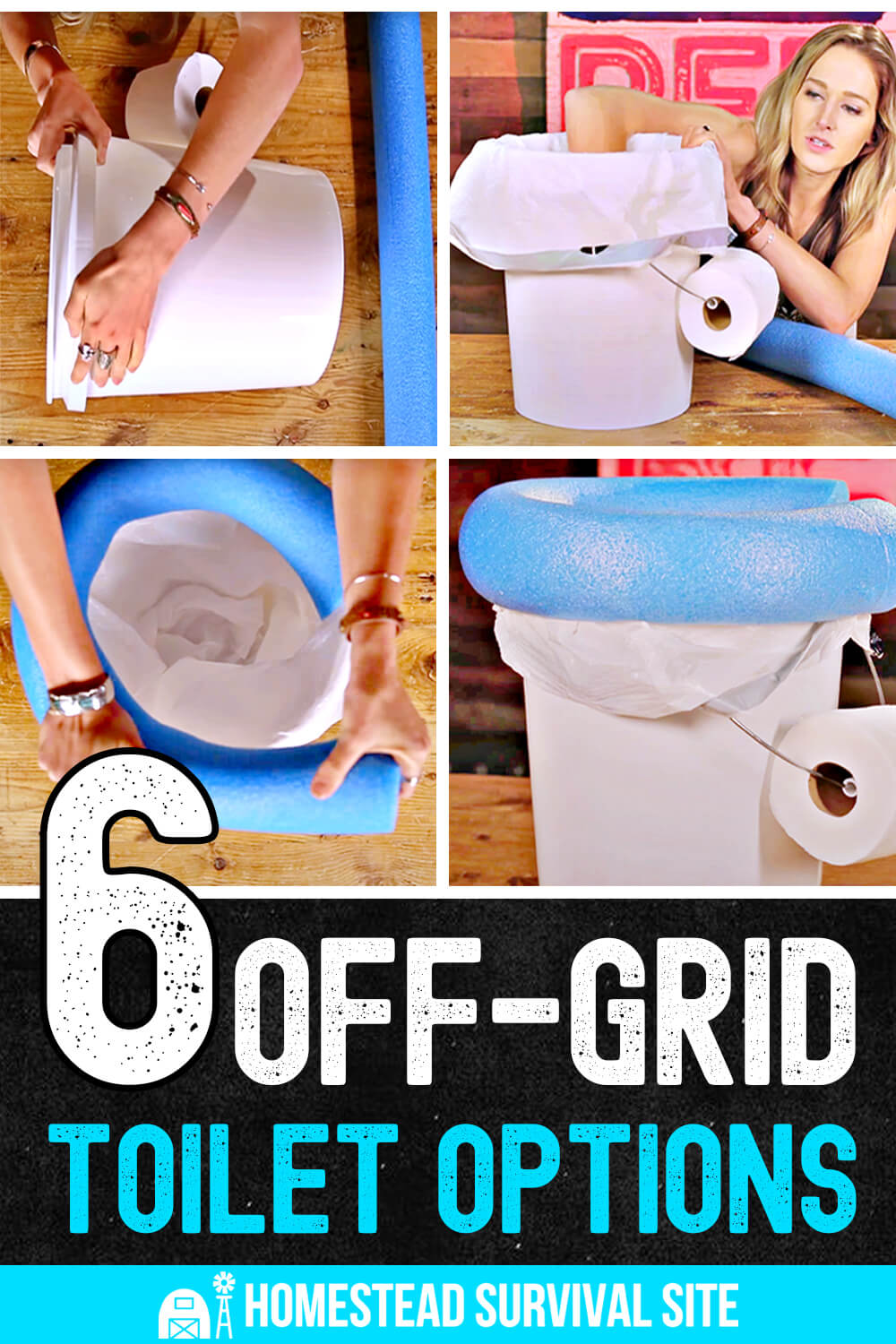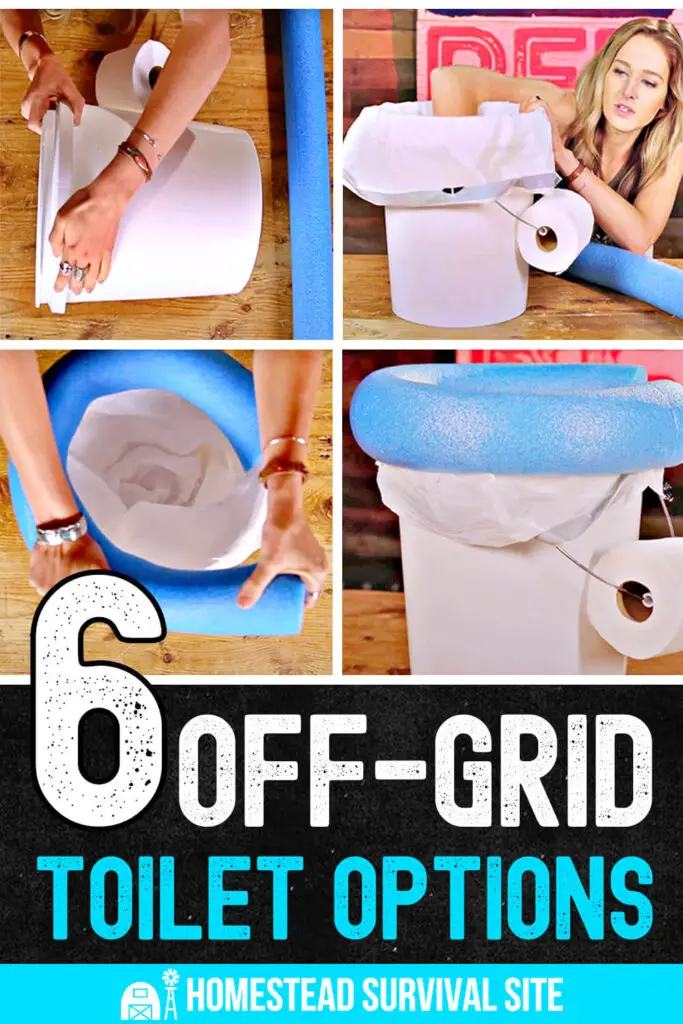Estimated reading time: 9 minutes
When you are looking to disconnect and go off-grid, there is one aspect of homesteading that isn’t all that romantic, dealing with human waste. Most of us are used to pushing a button or a lever and having our business flushed away without ever having to think about it again.
Unfortunately, it isn’t quite as easy as that when going off-grid, but not to worry because there are several off-grid toilet options available with varying degrees of complexity and affordability.
Want to save this post for later? Click Here to Pin It On Pinterest!
A Few Things To Think About
Before running out and purchasing a bunch of DIY toilet supplies there are a few things that you need to find out and think about.
Local Laws And Regulations
The first thing you are going to want to do is to find out your local laws and regulations regarding waste disposal. Every area is different in what they require and you don’t want to spend a lot of time and money only to find out later that you could get into trouble or be fined. Talk to plumbers in the trade or visit your town hall for resources on this topic.
Method Of Disposal
Ask yourself how much effort you want to put into disposing of your waste. Do you want to simply bag it up and throw it away? Are you allowed to throw it away and if so, where? Are you willing to deal with composting methods? Or do you want something as similar to a municipal hookup as possible?
Property Layout
Another thing to take into consideration is the size and layout of your homestead property because these factors can dictate what options are best or even possible. For example, if your property is small and you have a freshwater source that you draw from on the property, a traditional outhouse or septic system may not work.
6 Toilet Options
Bucket Toilet
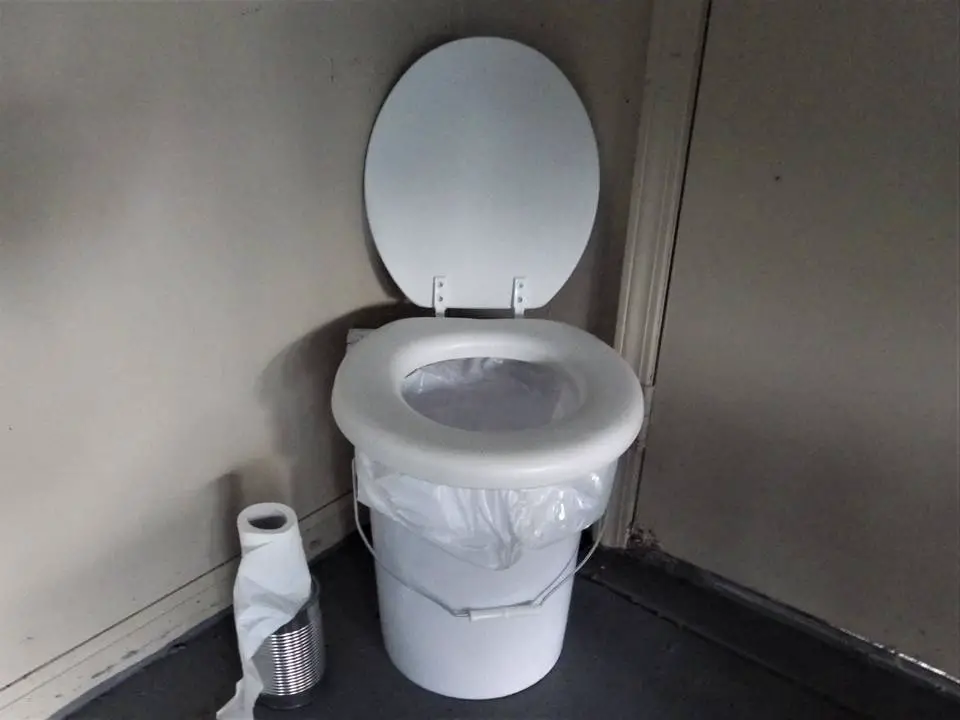
An ordinary five gallon bucket is one of the simplest toilets to use, although they will have unpleasant odors and will also be a bit messy to clean up. Using this option is pretty straightforward.
Either do your business right into the bucket or use a liner, such as a trash bag. Trash bag liners should be thicker than your standard kitchen trash bags to help avoid any accidental spills. Bags that are three mills thicker or more should work just fine.
This option does require you to have a disposal method in place for when the container becomes full, whether that be throwing the waste into a designated spot outdoors, taking the full liners somewhere else, or burning the waste if that is allowed in your region.
The good news is that this option is incredibly affordable, the supplies can be picked up at any hardware or big box store, there isn’t any installation process, and it’s very portable.
You can make sitting down on the bucket much more comfortable by getting yourself a toilet seat for the top or you can get a portable bucket with a seat. You can also reduce odors by using toilet treatment drops ins.
Pros and Cons
Pros
- Affordable
- Easy to set up
- Portable
- Doesn’t use any water
Cons
- Bad odors
- Requires disposal method to be available
- Can be messy
For a more in-depth look at a simple bucket toilet, check out this video.
Bucket Composting Toilet
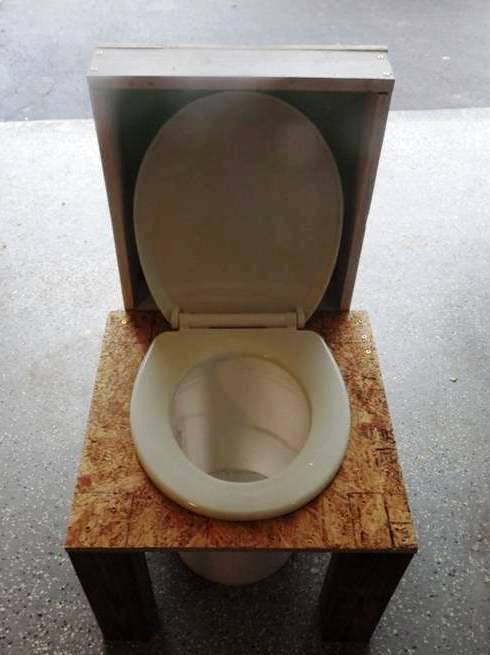
Similar to the previous method, a composting toilet can be set up with a simple five gallon bucket. A composting toilet is slightly cleaner, can have fewer odors, and once the container is full it can provide you with a rich compost to use in your soil.
A composting toilet works something like this. You set up your bucket and put in a layer of biomass such as grass, leaves, pine needles, sawdust, or moss. Once you have done your business in the bucket, another thin layer of biomass is put on top. This is done over and over until the container becomes full. The biomass helps to start the process of breaking the waste down and it also helps to reduce odors.
Once the container is full it is sealed up and set aside to be composted later. While this option requires a few more supplies and steps to take than just a plain bucket, it is still easy to set up and quite affordable.
Pros and Cons
Pros
- Affordable
- Easy to set up
- Portable
- Simple to set up
- Reduced odors
- Provides rich compost
- Doesn’t use any water
Cons
- Odors may still be present
- Requires several extra buckets
- Requires composting step
For a more in-depth look at bucket composting toilets, check out this video.
“Deluxe” Composting Toilet

One step up from a bucket composting toilet is what I call a “deluxe” composting toilet. These come in all shapes and sizes but on the outside, they look a lot like a normal toilet, which means they are much more likely to be used inside of a home.
Some of these types of composting toilets may require a bit more work to install as there is more to them and they generally have an exhaust fan which helps a lot in reducing odors.
Pros and Cons
Pros
- More aesthetically pleasing
- More comfortable to use
- Zero odors or reduced odors
- Doesn’t use any water
Cons
- Requires biomass
- May require access to a power source
- Waste or composted waste must be disposed of
For a more in-depth look at “deluxe” composting toilets, check out this video.
Dry Flush Toilet
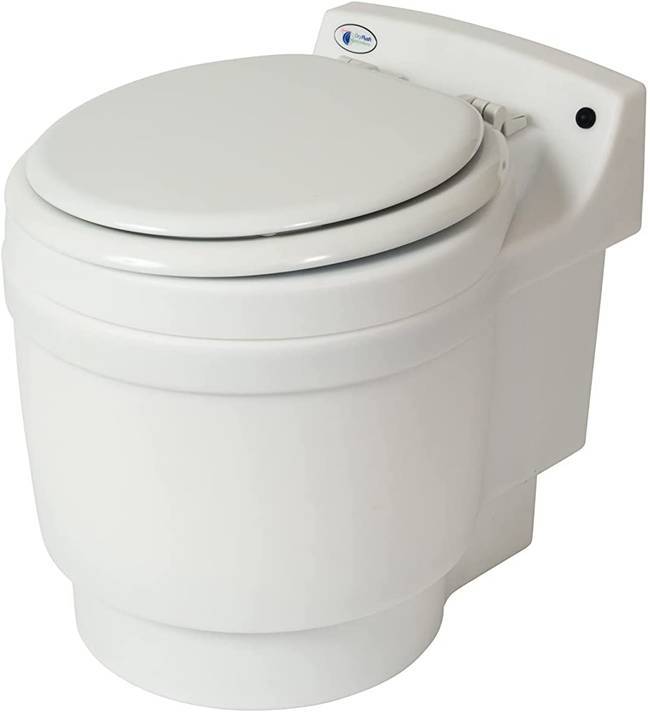
This is a highly portable toilet that can be used for camping, in RVs, and on a homestead. True to its name, it uses zero water, however, it does require access to a power source. A dry flush toilet looks very similar to a normal toilet, only smaller.
Here’s how they work. Underneath the lid is a foil sheet that lines the inside of the bowl. After conducting your business, a button is pushed that activates a blower and motor inside.
This mechanism uses air to push or pull the liner while at the same time twisting the liner to form a closed bag containing the waste. Once the bag is sealed, a section of new liner is pulled into place and the toilet is ready to be used again. When the liner has been used up, the sealed bags inside must be taken out of the toilet and disposed of.
Dry flush toilets sound pretty convenient, but there are varying reviews on their dependability and how well they actually keep odors locked away. This unit will run several hundred dollars not to mention the cost of purchasing new liner refills.
I have never used one of these toilets but I do foresee two big problems. One, the toilet is dependent on a power source so if you lose power, you can’t use your toilet. Two, the toilet does have several moving parts and if any of them break, again, you won’t be able to use your toilet.
Pros and Cons
Pros
- Portable
- Easy to use
- Reduced odors
- Waste is contained in sealed bags
Cons
- Cost
- Requires specialized liners
- Lingering odors reported
- Dependent on a power source
- Moving parts could break
For a more in-depth look at dry flush toilets, check out this video.
Latrine/Outhouse
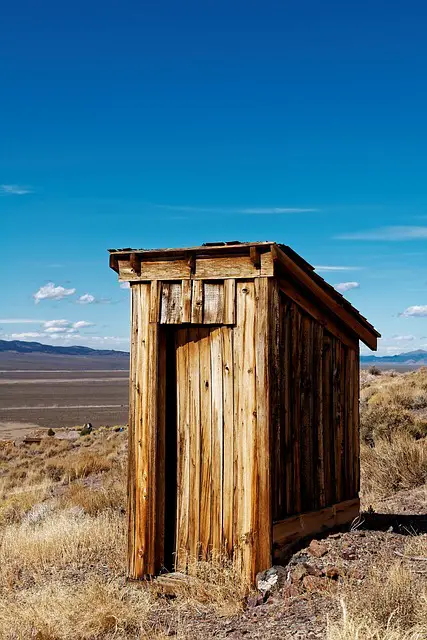
The terms latrine and outhouse tend to be used interchangeably but a latrine is usually just a pit or trench dug into the ground with no structure over it or it uses a structure that is easily moved. On the other hand, an outhouse tends to be a semi-permanent structure over a pit.
Traditionally, a simple pit is dug and once it was filled with waste, a new pit would be dug and the outhouse was moved over it. Nowadays, you do have the option of installing a tank in the pit to keep the waste self-contained. Once the tank is full, you can have it pumped out by a disposal company, similar to how a porta-potty works.
The placement of an outhouse without a tank needs to be well thought out so that any runoff from the waste doesn’t contaminate any water or food sources. Once this is done, the construction of an outhouse can be hired out but it is a simple enough project that a handy DIYer can easily install one.
Pros and Cons
Pros
- Waste is contained underground
- Outhouses can be simple or elaborate
- More comfortable to use than a bucket
- Doesn’t use any water
Cons
- Odors will still be present
- Risk of runoff contamination
For a more in-depth look at how to build an outhouse, check out this video.
If you want an outhouse but don’t want to dig a pit, check out this video.
Septic System
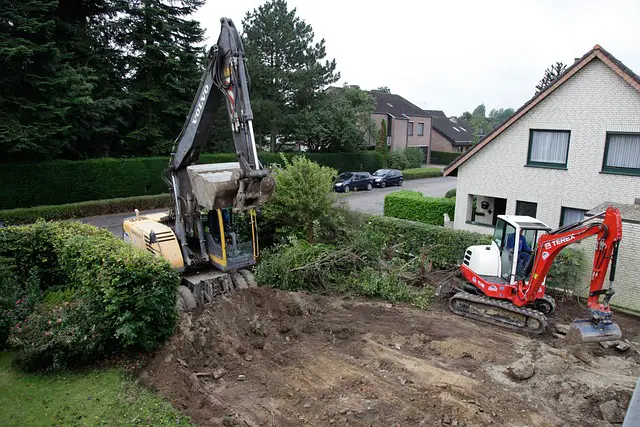
Installing a septic system is expensive but it is the closest option to being hooked up to a municipal system. Here is a quick overview of how a septic system works.
When waste is flushed down the toilet it is carried to a septic tank, which acts as a holding area. Within the tank, some solids sink to the bottom while other solids such as grease/oil/fats rise and form a layer on top. Liquids drain out to what is called a tile or drain field on the property. The liquid is released into the ground which acts as a filter.
Since the solids stay in the tank they will need to be pumped out once every few years. Of course, the frequency of pumping out a septic tank depends on its size and usage.
Pros and Cons
Pros
- No odors when everything works properly
- No disposal issues after flushing
Cons
- Expensive to install
- Maintenance costs
- The tank must be pumped out
For a more in-depth look at installing a septic system, check out this video.
You May Also Like:

